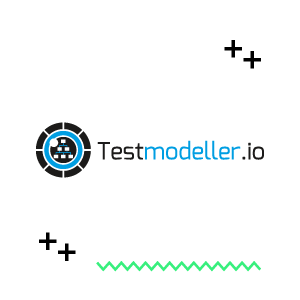If you’re feeling the pressure of delivering higher quality software at a faster pace, you’re not alone. Quality teams everywhere are experiencing a push from stakeholders in order to stay competitive.
Fortunately, DevOps and its components, Continuous Integration and Continuous Development are a way to speed up the rate of delivery by integrating all of the software development functions together, including testing.
Automated testing is one of the most important parts of any CI/CD pipeline because it ensures that testing is reliable, fast and integrated. Without proper automated tests that run fast and have good coverage, there can be no successful DevOps workflow.
In this post, you’ll learn how to build a mature test automation framework to leverage a DevOps workflow and increase the quality and speed with which you deliver software.
Testing Automation for a successful DevOps workflow
Continuous Integration is a practice of DevOps, which merges all of the developers’ code to a central location and validates their merges with an automated build. In order for Continuous Integration to be successful, it must have automated testing.
Automation will provide you with the constant feedback you need from a build > test > deploy process. In order to do all of this properly, testing must account for the different environments and manage them accordingly. This quickly becomes a significant effort and could require one or more team members to be involved full-time in that effort.
DevOps won’t eliminate the need for skilled infrastructure staff, but automation will allow staff to be much more effective. Automation reduces manual effort through repeatable and stable processes.
Building the Infrastructure for Testing Automation
In the beginning, it is important to spend time automating the provisioning of different environments based on configurations managed similarly to code. Automating the provisioning of environments allows a systematic way of building them. It also provides stability for the testing that will be performed on them.
Also, to be able to give feedback efficiently we need to account for the test data that we’ll be using. Good test data is critical to any deliverable program. Real-world data is hard to model, difficult to build and very hard to store as an asset.
Because of the amount of effort, Test Automation in DevOps is a great help since we use Continuous Integration to handle extremely complex workflows.
10 Steps to building a mature Test Automation framework:
A Test Automation Framework is a set of processes that will ensure your QA team is testing effectively and efficiently. When you establish a Testing Automation Framework, your entire team will be aligned.
Follow this 10 step checklist to ensure you’re building a Mature Test Automation Framework:
- With your team (developers/business/testers) identify which test cases are essential to be executed for a particular build requirement.
- Testers and developers should identify the areas affected due to a particular build and execute those related test cases plus a sanity test pass.
- Next, you need to configure specialized code analysis and coverage tools to make sure you achieve near 100% code coverage. Xray provides the ability to analyze coverage from multiple perspectives, including an overall project coverage overview. This way, executing all regression test cases becomes obsolete)
- What is your strategy around testing new features? You need to formalize them into interim builds. The QA team can create test scripts and run these automation tests on the temporary builds until the code becomes stable enough to be deployed into other environments.
- Standardize all the environments required for testing and automate the deployments.
- Use various techniques to fire automation testing into cross-platform/browser environments; using Xray’s Test Environments can assist in tracking the results and consolidate progress on each one of them
- Define the exit criteria for each run. This is important so when the test results are fed back into the chain, you can make a go/no-go decision
- Whenever you find a blocker or critical bugs, you need to report, fix and pass them through the same number of continuous actions. You should do this before the code is deployed again in the next environment.
- Set your application monitoring in place in order to detect problems earlier and report them proactively. An example of these could be specialized counters like response times, memory and CPU usages.
- Monitors need to be configured to run automatically with rich reporting evidence.
Keep in mind that good automation softens the test managing difficulties of handling the different environments and deploying code into the correct places.
As well as with the development code, test automation must follow good coding practices and standards. When a framework is put in place, it should be treated as a software development life cycle in itself. It will provide reusable components for the teams to effectively create automation tests, specific to their needs.
When you apply solid design to automation code, you ensure that teams get the best value out of test automation. Well-designed automation code is important, as it becomes simpler to continue running and improving the system consistent with automated testing.
Closing the loop on DevOps, Continuous Integration and Automation
As you can see, building a mature testing automation framework takes time but is well worth it in the long-run. With well-implemented automation, your team can focus their effort on actual testing.
Xray is a test management tool which directly integrates with the leading SDLC software, Jira. When your development and test teams work in the same tool, you’ll never deliver broken or untested code again. Our REST API and integrations with automation frameworks like Cucumber, Selenium and JUnit, make it easy to build your CI/CD pipeline.
By automating your testing, you can achieve the speed and agility that DevOps provides. Download our eBook – Delivering better software using Test Automation – and see how you can integrate your development and testing within one collaborative tool-set – Jira and Xray.
Author Bio
Ana Sousa is a Software Quality Assurance Engineer helping companies succeed in delivering the best software. Before starting in QA, Ana spent 12 years as a Full Stack Software Developer. After a successful career in software development, Ana is now dedicated to helping companies deliver great quality software using best practices.






2 comments